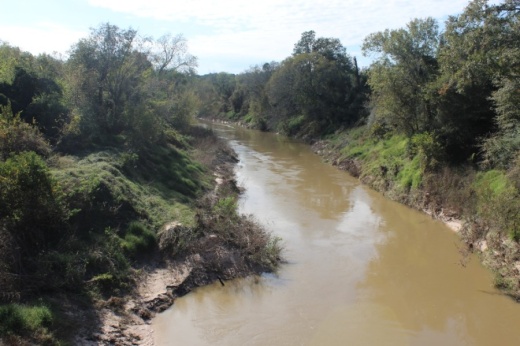"We have spent tens of millions of dollars removing silt and sediment and repairing various channels all across the Cypress Creek watershed. Can I say that the Cypress Creek watershed, overall, is in better shape than before Hurricane Harvey? Yes. And we continue to make more progress on projects," Zeve said during a Feb. 11 presentation to the Houston Northwest Chamber of Commerce.
According to Zeve, throughout 2020 the HCFCD acquired 56 individual tracts of land totaling approximately 284 acres in the Cypress Creek watershed to be used for either flood plain preservation or future stormwater detention basin projects. Zeve said the land acquisitions are made possible through a $100 million bond allocation designated specifically for right of way acquisition in the Cypress Creek watershed.
"In order to build stormwater detention basins, which is one of the primary ways we reduce flooding risk all over the county, we have to have property," Zeve said. "So part of our acquisitions are going to be used for future stormwater detention basins."
One of those right of way acquisitions was the 26.73 acres that encompass the Raveneaux Country Club clubhouse and adjoining facilities. While HCFCD officially took over the property in late January, Zeve said negotiations between the flood control district and the Cypress Forest Public Utility District—which owns the remaining 206 acres that encompass the golf course—are still ongoing. The end goal for the HCFCD is to create a regional stormwater detention basin in place of the existing country club.
"The flood control district is still working on trying to come up with a win-win situation with the Cypress Forest Public Utility District on the future of the Raveneaux Country Club," Zeve said. "We hope to have some type of resolution this year."
In the interim, Zeve said the HCFCD has secured the facility and has worked with the Harris County Precinct 4 Constable's Office to increase patrols of the area while the property remains vacant. Additionally, Zeve said the CFPUD is working on a maintenance plan for the golf course until an agreement can be reached.
Zeve added negotiations regarding the Longwood Golf Club—another Cypress Creek watershed golf course that has been identified as a potential stormwater detention basin site—are at a standstill. According to the HCFCD, the proposed project includes the creation of a stormwater detention basin at the golf course as well as the widening of Little Cypress Creek from 340 feet to 600 feet. The project would take up nine of the 27 golf course holes and the owners of the Longwood Golf Club, Triumph Golf, would pay out of pocket to reroute the remaining 18 holes.
Upon completion, the project would remove the risk of flooding for about 300 homes in the Longwood Village neighborhood and benefit more than 3,100 homes in the surrounding area, according to HCFCD officials.
"The flood control district does have the ability to exercise eminent domain to acquire property, and we have done that in the past—it's generally our last resort; we don't like to use that power; we generally like to try to negotiate a deal," Zeve said. "But no decision has been made if the Longwood Homeowners Association situation doesn't work out."
Zeve added while the feasibility study for the Longwood Golf Club project is already done, preliminary engineering, final design and construction would take at least three years to complete.
Other projects completed in 2020 include the update to the 2003 Texas Water Development Board Cypress Creek Tributary Study and the investigation of expanding stormwater detention basins in the Cypress Creek watershed. While the project was completed nearly one year ago, Zeve said in that time the district has hired a consultant to take the recommendations of the study and draft a plan for implementation.
"We hope to have a draft of their plan ready for internal flood control district review, and then hopefully in April, we're going to ... have a couple of community engagement meetings to present the results of that plan to the public for feedback," Zeve said. "We do not have funding sources identified to build all of the detention basins that we're going to recommend when our report comes out in a few months ... but we are actively working on identifying funding for each of those projects."
The flood control district also recently completed the construction of extreme rainfall event swales on six vacant buyout lots in flood-prone areas of the Cypress Creek watershed. According to the HCFCD website, the extreme rainfall event swales are shallow channels that help direct stormwater that collects inside neighborhoods during heavy rain events to reduce street ponding and other flood risks. Construction began in December and wrapped up in January.
"If there's another Hurricane Harvey, we will experience massive flooding," Zeve said. "The amount of rain that fell during Hurricane Harvey is not something that engineers design for. It would be similar to designing the Katy Freeway inside a residential neighborhood. We don't design our drainage infrastructure for something that massive, just because it's so rare and hopefully, a once-in-our-lifetime type of event."
For a comprehensive list of project updates and projects that were completed in the Cypress Creek watershed in 2020, click here.





